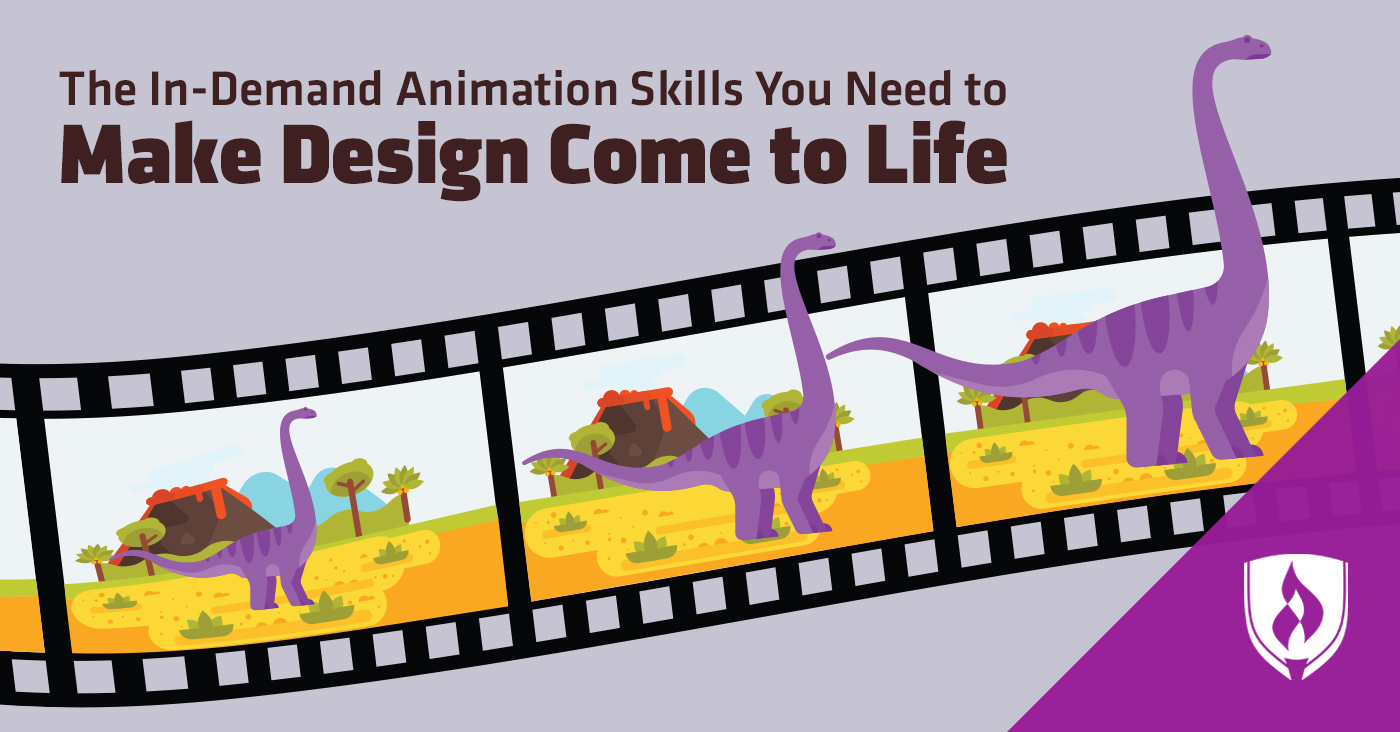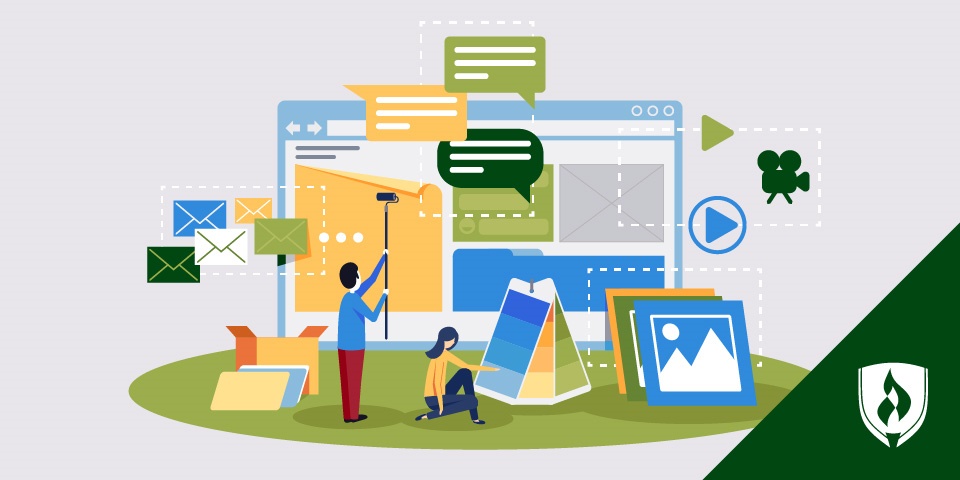Animation design sounds like one of those dream career fields that’s only for the lucky few. You can only imagine how satisfying it must be to put your creativity to work dreaming up cartoons, special effects and social media graphics—all while getting paid for it!

All this daydreaming may have led you to wonder what skills you actually need to work as an animator. You’d like to know if you have what it takes to succeed in a career that lets you combine your affinity for tech know-how with your creative side.
Working in animation can look intimidating from the outside, but you might be surprised to learn how many skills you already have that are valued in this creative career. We spoke to an animation pro and rounded up the data to bring you this list of in-demand animation skills employers are looking for.
Technical skills needed to succeed in animation
Animation design uses technology to bring a designer’s creative vision to life, developing the special effects and visual imaging used in movies, commercials, cartoons, social media and more. It comes as no surprise that employers are looking for animation designers with the technical skills to get the job done.
So what technical skills should would-be animators focus on? To help answer that, we’ve used real-time job posting analysis tools to identify ten of the top technical skills employers are seeking in candidates. Here’s what we found:*
- Adobe Photoshop®
- Adobe InDesign®
- Graphic design
- Adobe Illustrator®
- Adobe Acrobat®
- Adobe AfterEffects®
- User experience wireframing
- Interaction design
- Motion graphics
- Prototyping
As you can see, much of the technical know-how is related to software that enables animation work. Knowing these programs is a big piece of the puzzle, but those are just the tools—think of it this way, even if you knew every detail about operating a table saw, it doesn’t mean you’d be able to build beautiful furniture. You’ll still need the ability to plan and design something solid. That’s why the fundamentals like a knowledge of design principles, how to create visually appealing scenes and the other training you’d receive in an Animation degree program are so important.
Soft skills needed to succeed in animation
This design field may rely on industry-specific software to create stunning animations, but finding success as an animator goes beyond technical skills. The best animators are able to combine their technical know-how with important soft skills that take their animations to the next level.
We spoke with graphic and motion designer Crissy Bogusz, whose animations are viewed by millions of people daily on Vogue’s Snapchat Discover channels to uncover the soft skills that make an animation designer stand out from the crowd.
Creativity
You probably aren’t surprised to see creativity on this list! Having technical skills won’t take you very far if you don’t have a creative vision to bring to life. “Animation can become lost in a sea of technical know-how, but design creativity can set your work apart from other animators,” Bogusz says.
Go beyond getting inspiration from outside sources and work on developing your own unique animation style. “Focus on your own personal style as an artist and bring that to life,” Bogusz says. She suggests beginners pay special attention to learning about layout, typography and color palettes.
Emotive communication
Like with any art form, part of an animator’s job is to connect with the viewer through their designs and effects. “The audience’s response to your work is what will make them remember your work,” Bogusz says. The goal is to evoke a particular emotion, whether it’s heart-pounding suspense in a blockbuster film or excitement at seeing a brand’s commercial for a new product.
While visuals are obviously the primary concern of animators, they’ll still need to think outside the box when it comes to emotive communication in order to accomplish their goals. “Even audio added to a static design will create an emotive feel that will create a response within your audience,” Bogusz says.
Organization skills
Animators often work on a team with others, juggling multiple projects and deadlines as they go about their daily work. Animators will often have many files in progress. Staying organized is essential if you want to be successful in a collaborative career with many moving parts.
Bogusz recommends maintaining a file-naming convention, and organizing all files the same way to keep everyone on the same page. “If you’re working within a team, this is essential in case someone needs to jump onto your project to amend it if you’re not around.” All the technical skills in the world won’t matter if disorganized files make it impossible to work together with your clients or your team.
Attention to detail
Visual design careers require close attention to detail to ensure every piece of a project is working toward achieving its goal, and animation is no exception. “Focusing on the attention to detail can help you creatively as well as functionally,” Bogusz says. “You will learn how to work faster by forcing your work to be more complex, and it will add depth to your project.”
Bogusz adds that small details like highlights or light movement can be the difference between an average animation and one that captures an audience. Technical skills will help you achieve these effects, but attention to detail will help you understand the impact they can have in the first place.
Self-motivation
Animation designers may work together with others on a design team, but they shouldn’t expect to be micromanaged. Animators must have the self-motivation to develop the initial project from scratch. Then they can collaborate with colleagues or clients to incorporate constructive feedback.
“It can be daunting creating something from nothing, [especially] when you are asked to come up with a project without much direction,” Bogusz says. She advises that animators should begin experimenting with any small ideas they may have rather than procrastinating. “Don’t be put off if you don’t have a clear idea of where you’re going. It will always come to you.”
The skills to succeed in this animated career
Now that you know which animation skills employers are looking for, you might feel more confident about making this dream career a reality. Learn more about whether a career in animation design might be the right fit for you in our article, “Everything You Need to Know about Working in Animation Design.”
*Burning-Glass.com (analysis of 6,309 animator job postings, Oct. 01, 2017 - Sep. 30, 2018).
Adobe Photoshop, Illustrator, InDesign, Acrobat and After Effects are registered trademarks of Adobe Systems Incorporated.




